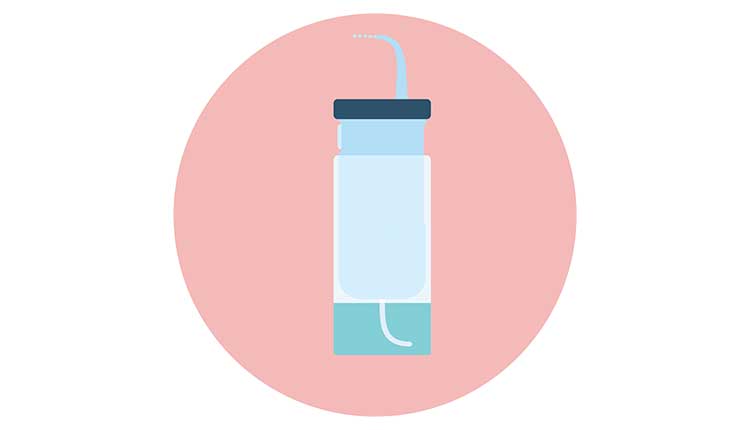
Chronic periodontitis is the most common variation of periodontal disease. In addition, acute periodontal diseases—such as the periodontal abscess, acute necrotizing ulcerative gingivitis (ANUG), and acute necrotizing ulcerative periodontitis (ANUP)—are encountered, albeit less frequently.
Photo Credit: Alina Kurianova / iStock / Getty Images Plus

Risk vs Benefit
Water flossing—when used as an adjunctive self-care strategy—is effective in helping patients manage chronic periodontitis. However, some oral health professionals approach such a recommendation with hesitation. An often-heard concern is that the degree of inflammation associated with a periodontal abscess, ANUG, or ANUP increases the fragility of the soft tissues, making water flossing risky. It is true that severe inflammation can make the soft tissues more fragile, and these soft tissues may be more susceptible to trauma from the pulses of water from a mechanical oral irrigator. As a result, recommending a water flosser as adjunctive therapy in treatment of these acute clinical conditions may not be beneficial.
Photo Credit: Kateryna Chernetska / iStock / Getty Images Plus

Impact on Inflammation
By contrast, soft tissues associated with chronic periodontitis may be far less fragile. The concern regarding tissue trauma is reduced and water flossing should be considered. In fact, clinical research demonstrates that water flossing helps to reduce inflammation. Clinically, when water flossing is used, a reduction in edema, erythema, and bleeding on probing is observed. Evidence points to the pressure and pulses of water affecting the composition of the subgingival flora. It does not matter whether water or an antimicrobial fluid is implemented as the irrigant.
Photo Credit: watanyou / iStock / Getty Images Plus

Chronic Periodontitis
In chronic periodontitis, there are three types of subgingival bacteria: a root-surface adherent biofilm, a nonadherent or planktonic bacteria, and a pocket epithelium-adherent biofilm. The bacterial plaque or biofilm that adheres to the root surface supports the growth of the planktonic bacteria in the pocket space. Moreover, the planktonic bacteria encourage the growth of the pocket epithelium-adherent biofilm, which is also known as the invasive red complex. The red complex bacteria not only adhere to the pocket epithelium but also cause ulcerations of the pocket wall and, subsequently, invade the underlying connective tissue, infecting the host. The presence of bleeding on probing in a pocket is associated with the red complex.
Photo Credit: yomogi1 / iStock / Getty Images Plus

Effective Oral Hygiene
Water flossing may not be able to completely remove root-adherent plaque but the pulses likely disrupt the planktonic microbiota in the pocket space. The disruption reduces support for the red complex bacteria, which are likely decreased in number, effecting a change in the subgingival bacterial composition. With less invasive bacteria to infect the patient, a decrease in inflammation and bleeding on probing may be observed. As water flossing disrupts and alters the subgingival microbial composition in chronic periodontitis, oral health professionals may want to consider recommending it as part of an effective oral hygiene regimen.

